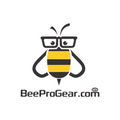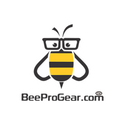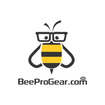Introduction to Beekeeping
Beekeeping is an exciting and rewarding hobby that provides fresh honey, supports pollination, and helps sustain bee populations. Whether you're interested in backyard beekeeping or plan to scale up, understanding the key fundamentals is crucial.
Step 1: Educate Yourself on Beekeeping Basics
Before setting up a hive, it's essential to understand beekeeping practices, colony behavior, and hive management.

Learning Resources:
- Books & Articles: Read beginner-friendly beekeeping literature to build foundational knowledge.
- Online Videos & Tutorials: Watch expert guides and demonstrations on hive setup and maintenance.
- Beekeeping Courses: Enroll in local or online beekeeping workshops to gain hands-on experience.
- Join Beekeeping Forums & Groups: Engage with experienced beekeepers for insights and support.
Understanding Honeybee Biology:
- Learn the roles of the queen, worker bees, and drones in colony sustainability.
- Understand seasonal hive activity and honey production cycles.
Step 2: Check Local Laws and Regulations
Before setting up a hive, verify your local beekeeping laws and zoning restrictions.
How to Check Beekeeping Regulations:
- Contact Agricultural Extension Offices for region-specific requirements.
- Join a Local Beekeeping Association to stay updated on legal changes.
- Verify Hive Placement Rules (distance from property lines, neighbors, and public areas).
- Check Licensing & Permit Requirements if applicable in your area.
Ensuring legal compliance helps prevent potential conflicts and fines.
Step 3: Join a Beekeeping Club for Networking & Support
Joining a beekeeping club provides valuable mentorship and learning opportunities.
Benefits of a Beekeeping Community:
- Access to expert advice and hive management tips.
- Participation in hive demonstrations and workshops.
- Opportunities to source bees and beekeeping equipment.
- Support during troubleshooting and seasonal hive adjustments.
Being part of a beekeeping network accelerates your learning curve and success.
Step 4: Choose the Right Hive Location
Selecting an optimal location for your beehive is crucial for colony health and productivity.
Key Factors for Hive Placement:
- Sunlight Exposure: Hives should receive morning sun for active foraging.
- Wind Protection: Use natural barriers like fences or shrubs.
- Access to Diverse Flowers: Ensure a variety of nectar and pollen sources.
- Water Availability: Place a shallow water source nearby for hydration.
- Ease of Access: Ensure sufficient space for regular hive inspections and maintenance.
Proper hive placement promotes a thriving colony and minimizes environmental stressors.
Step 5: Select Essential Beekeeping Equipment
Investing in quality beekeeping tools ensures safe and efficient hive management.
Must-Have Beekeeping Supplies:
- Beehive with Frames: Choose a Langstroth, Top-Bar, or Warre hive based on preference.
- Protective Gear: A bee suit, gloves, and veil to prevent stings.
- Hive Tools: Smoker (calms bees), hive tool (pries frames), and bee brush (gentle handling).
- Feeder: Helps provide supplemental nutrition during nectar shortages.
Equipping yourself with the right tools enhances safety and efficiency.
Step 6: Acquire Your First Bee Colony
Selecting the right method to obtain bees is crucial for colony establishment.

Ways to Obtain Bees:
- Package Bees: Includes a queen and worker bees in a screened box.
- Nucleus Colony (Nuc): A small, pre-established hive with a mated queen.
- Catching a Swarm: Capturing wild bees using bait hives.
- Splitting an Existing Hive: Transferring part of a healthy colony from another beekeeper.
Buying from a reputable source ensures healthy, disease-free bees.
Step 7: Install Bees in the Hive
Successfully introducing bees to their hive ensures a smooth transition.
Steps for Installing Bees:
- Carefully transfer bees into the hive.
- Ensure the queen is introduced properly.
- Provide initial feeding (sugar syrup) if necessary.
- Monitor colony behavior for the first few weeks.
Ensuring a smooth transition increases the chances of colony acceptance and growth.
Step 8: Start with Multiple Hives
Managing more than one hive increases learning opportunities and colony resilience.

Advantages of Starting with Two Hives:
- Comparison Learning: Identify differences in hive behavior and health.
- Resource Sharing: Strengthen a weaker hive using brood or food from a stronger one.
- Higher Honey Yield: Multiple hives boost overall honey production.
- Greater Resilience: Backup colony in case one fails.
Ensure you have enough space and resources to maintain multiple hives effectively.
Step 9: Conduct Regular Hive Inspections
Routine hive checks help maintain colony health and productivity.
Inspection Checklist:
- Check for Queen Presence: Ensure she is laying eggs and has a healthy brood pattern.
- Monitor Food Stores: Evaluate nectar and pollen reserves.
- Detect Pests & Diseases: Look for signs of mites, foulbrood, or colony stress.
- Assess Colony Strength: Observe worker bee activity and population trends.
Regular inspections prevent problems and optimize colony performance.
Step 10: Harvesting Honey Safely & Efficiently
Once the colony has built surplus honey stores, it's time to harvest.
Best Practices for Honey Harvesting:
- Ensure the hive has excess honey before harvesting.
- Use a bee escape board or smoker to gently remove bees from frames.
- Extract honey using a centrifugal extractor or crush-and-strain method.
- Store honey in sterilized, airtight containers to preserve quality.
Proper harvesting ensures sustainability while maintaining colony health.
Final Considerations for Successful Beekeeping
- Prioritize Safety: Always wear protective gear during hive inspections.
- Respect Neighbors: Inform them about your hives and address concerns.
- Stay Updated: Keep learning through research and beekeeping communities.
- Be Patient: Successful beekeeping requires observation, adaptation, and time.


